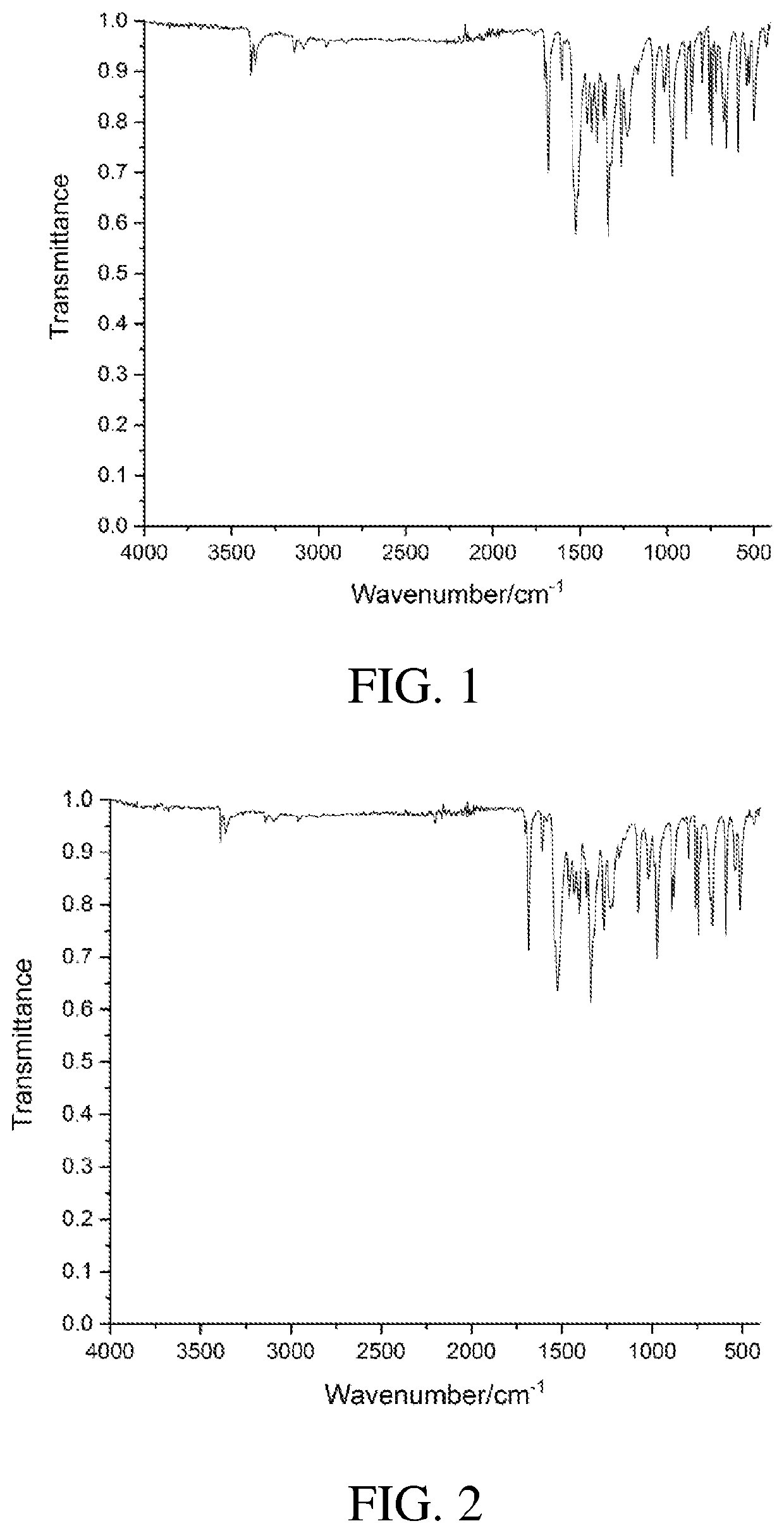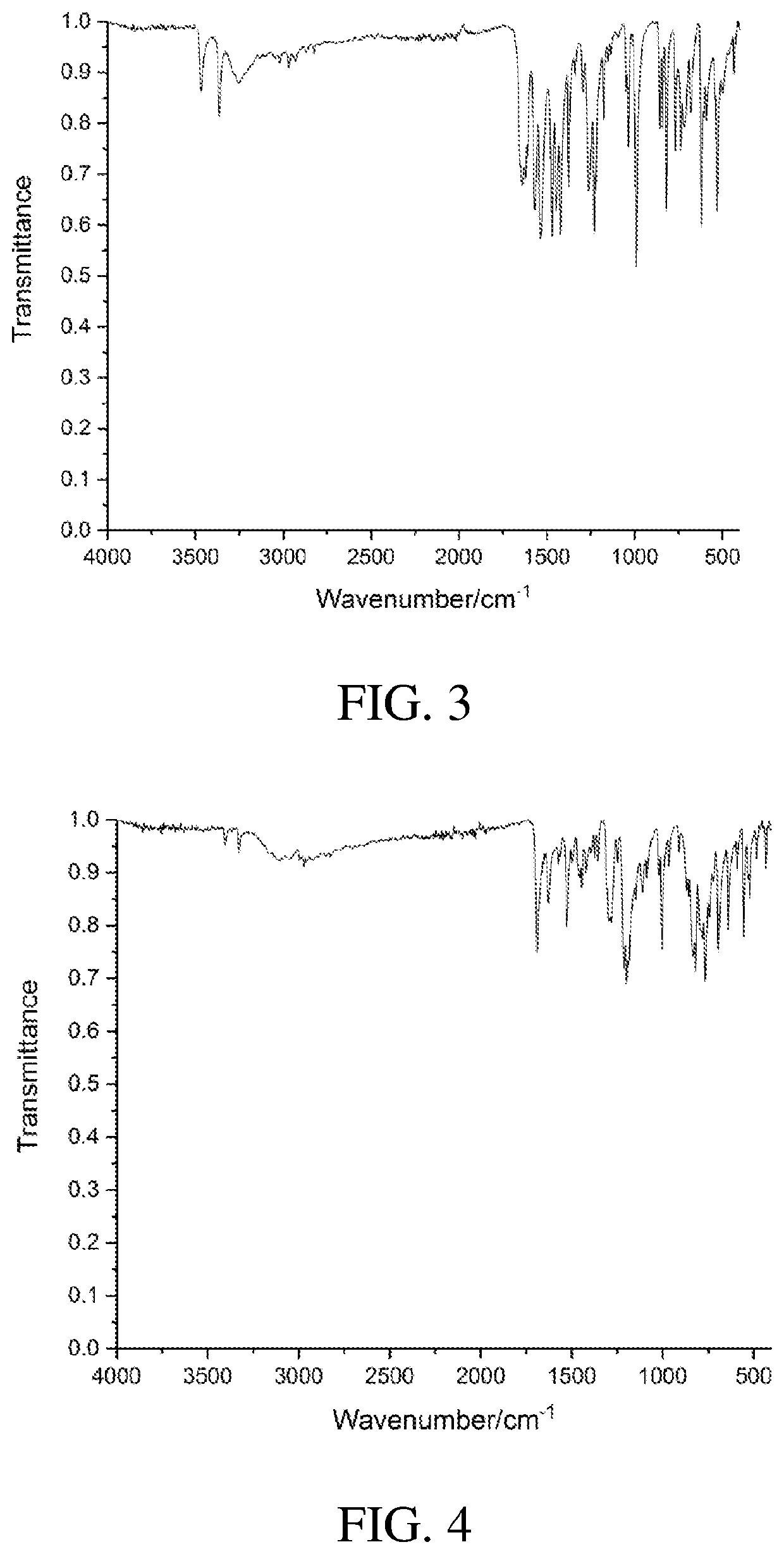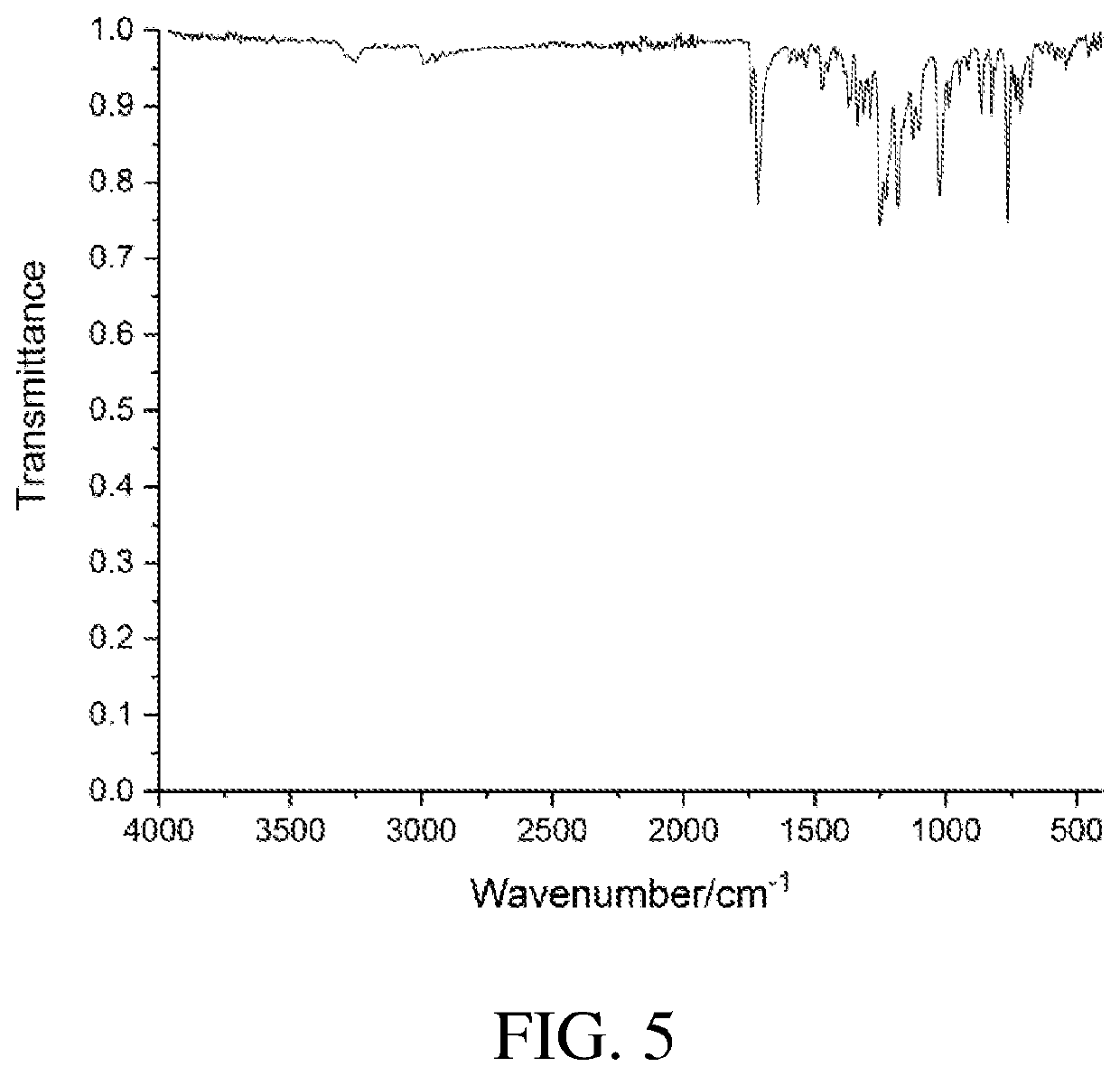4,5-disubstituted-1H-pyrrolo(2,3-f)quinolin-2,7,9-tricarboxylate compound and use thereof
a technology of pyrroloquinolin and tricarboxylate, which is applied in the preparation of carboxylic acid amides, chemistry apparatus and processes, organic chemistry, etc., can solve the problems of insignificant improvement of production scale, difficult to guarantee sufficient pqq acquisition, and inability to obtain 50 mg of pqq, etc., to optimize economic and environmental benefits, reduce waste discharge, and convenient reaction conditions
- Summary
- Abstract
- Description
- Claims
- Application Information
AI Technical Summary
Benefits of technology
Problems solved by technology
Method used
Image
Examples
example 1
Synthesis of Compound of Formula III
[0152]When R3═OMe and R2 is respectively Br, Cl, I, or OMe in Formula III, the route is as follows:
[0153]
[0154](1) Synthesis of Compound of Formula III when R2 is Br (namely, 2-methoxy-3-bromo-5-nitro-acetylaniline, Designated as Compound 3):
[0155]Synthesis Method I:
[0156]100 g of Compound 2 was slowly fed to 500 g of concentrated sulfuric acid while cooled in ice water, stirred to dissolve it, and mixed uniformly. 95 g of NBS was added, and reacted for 12 hrs at 25° C. after complete dissolution. After the reaction was completed, the reaction solution was added to 5000 g of water to precipitate a solid out. The solid was filtered under suction, washed to pH 5-6, filtered under suction, and dried to obtain 128 g of Compound 3. Molar yield: 93%, HPLC purity: 98.5%.
[0157]Synthesis Method II:
[0158]100 g of Compound 2 was slowly fed to 500 g of methanesulfonic acid while cooled in ice water, stirred to dissolve it, and mixed uniformly. 95 g of NBS was...
example 2
Preparation of Compound 7 (where in Formula I, R1═R4═Et, R2═Br, and R3═OMe) (namely, diethyl 4-bromo-5-methoxy-1H-pyrrolo(2,3-f)quinolin-2,7,9-tricarboxylate)
[0168]The synthesis route is as follows.
[0169]
[0170]The specific preparation method is as follows.
[0171](1) Preparation of Compound 2
[0172]100 g of Compound 1, that is, 2-methoxy-5-nitroaniline hydrochloride, was added to 1500 g of water, stirred to dissolve it, and then filtered after the solid was almost completely dissolved. 40% NaOH solution was added to the filtrate to adjust the solution to pH>4. The solution was extracted three times with 200 g of ethyl acetate. The organic phases were combined, washed with 500 g of saturated brine, and then dried over 100 g of anhydrous magnesium sulfate. After filtration, the solvent was rotary evaporated to dryness under reduced pressure at 50° C. to give an orange-red solid. The orange-red solid was dissolved in 600 g of acetic anhydride, heated to 80° C. and reacted for 4 hrs. After...
example 3
Preparation of Compound 7
[0198]Compound 2 was Prepared Through a Method that Followed.
[0199]100 g of Compound 1, i.e., 2-methoxy-5-nitroaniline hydrochloride, was dissolved in 600 g of acetic anhydride, and heated to 80° C. for 8 hrs, and the tail gas was absorbed with a NaOH solution. After the reaction was completed, most of the solvent was removed by evaporation under reduced pressure. After cooling, the residue was added to 1000 g of ice water to precipitate a large amount of a solid. The solid was filtered out, repeatedly washed with water until it was not significantly acidic, and dried to obtain 96 g of Compound 2. Molar yield: 93.48%, HPLC purity: 98.7%.
[0200]ESI (M / Z): 211[M+H].
[0201]The remaining steps were the same as those in Example 1.
PUM
| Property | Measurement | Unit |
|---|---|---|
| reaction temperature | aaaaa | aaaaa |
| temperature | aaaaa | aaaaa |
| temperature | aaaaa | aaaaa |
Abstract
Description
Claims
Application Information
 Login to View More
Login to View More - R&D
- Intellectual Property
- Life Sciences
- Materials
- Tech Scout
- Unparalleled Data Quality
- Higher Quality Content
- 60% Fewer Hallucinations
Browse by: Latest US Patents, China's latest patents, Technical Efficacy Thesaurus, Application Domain, Technology Topic, Popular Technical Reports.
© 2025 PatSnap. All rights reserved.Legal|Privacy policy|Modern Slavery Act Transparency Statement|Sitemap|About US| Contact US: help@patsnap.com



